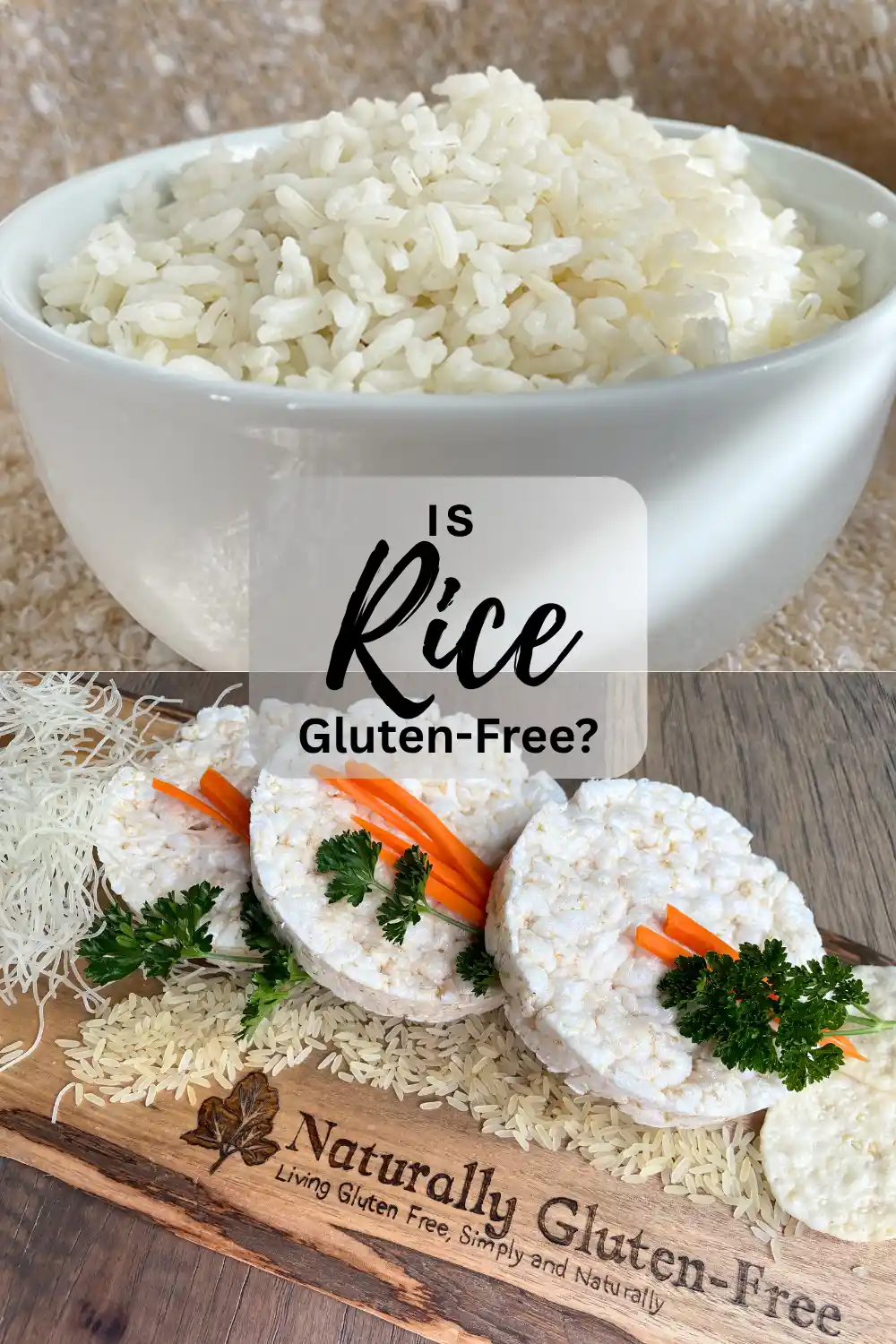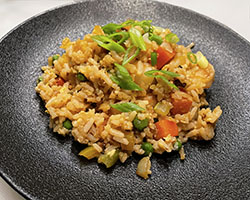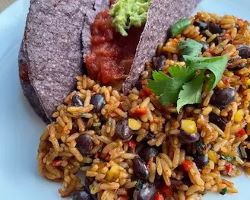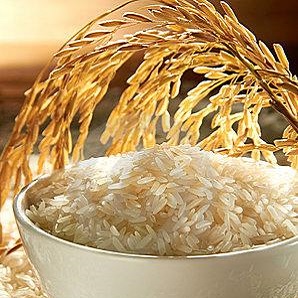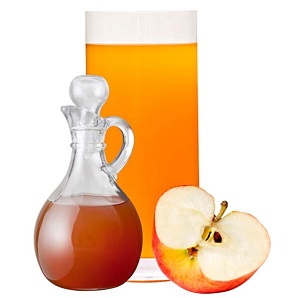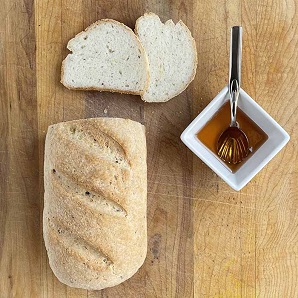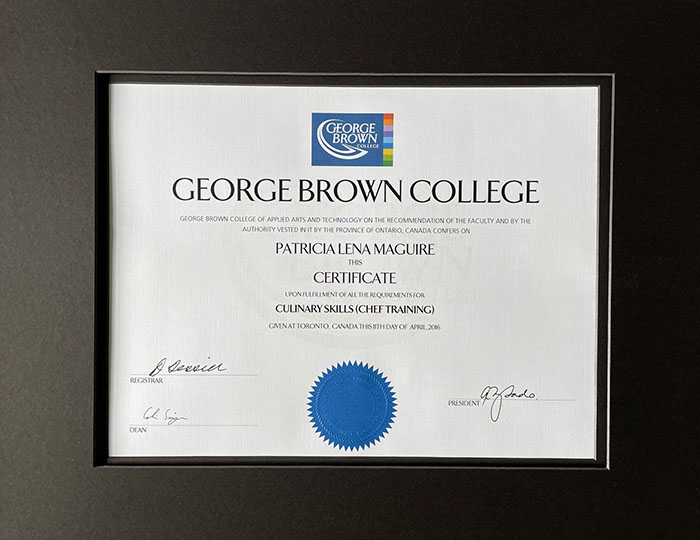- Home
- Gluten Free Grains
- Rice
Is Rice Gluten-Free? Your Complete Guide to Safe Rice Choices
If you’re new to living gluten-free, you’ve likely found yourself staring into in your pantry wondering what you can safely eat.
The buns and wheat crackers are out and so are many of the sauces. But what about rice? Is rice gluten-free?
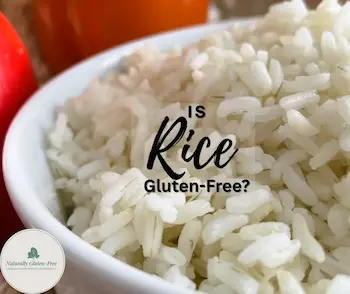
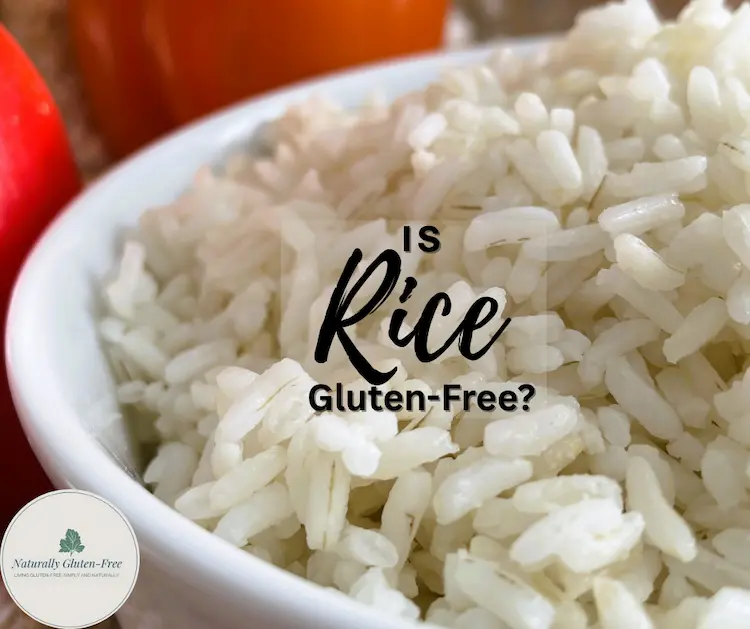
Table of Contents:
Is Rice Gluten-Free?
Yes, rice is naturally gluten-free! This means that plain rice in all its forms – white, brown, wild, jasmine, basmati, and even that confusingly-named glutinous rice – contains no gluten.
As someone who has been managing celiac disease for years, I can tell you that rice has become one of my most trusted staples. It's reliable, versatile, and when you know what to look for, it's completely safe for those of us who need to avoid gluten.
But, there are a few situations where rice is not gluten-free. In this guide I’ll help you to navigate around all the stumbling blocks so you can enjoy rice without worry.
Why Rice is a Great, Low-Risk ,Gluten-Free Choice
If you’ve been researching gluten-free grains, you’ve likely read that they are high risk for gluten contamination and that you should look for certified gluten-free products.
Rice is the exception.
Rice is not grown in the same environment as wheat, rye or barley. It is typically packaged and processed separately. So unlike oats for example which must be certified gluten-free, you don’t need to worry about that when it comes to rice.
The other great thing about rice is that it's a key ingredient in several international cuisines like Asian, Mexican, and Indian. They offer a huge variety of flavors so your gluten-free journey will be anything but boring.
Pin for Later
When Rice Isn’t Gluten-Free
The most common culprit is seasoned rice mixes and flavored rice products. These often contain seasonings, flavor enhancers or thickeners can include wheat, rye or barley. Always check ingredients to be sure.
For example, Ben’s Original Vegetable Medley contains soy sauce which is not gluten-free but their Fried Style Rice is gluten-free. Ben’s Original Broccoli and Cheddar Cheese product includes vermicelli noodles made from wheat.
Restaurant rice can be another minefield. This is something I learned the hard way early in my gluten-free journey. Many restaurants cook their rice in shared pots or add ingredients that like chicken broth or beef broth that aren’t gluten-free. Some use soy sauce or other non-gluten-free seasonings. Before ordering a rice dish I now always ask my server about how the rice is prepared.
Sushi rice deserves special mention because it’s one you might not think would be a problem. This is another lesson that I learned the hard way. The most common issue is the soy sauce, so you can ask for gluten-free soy sauce or bring your own. Be sure to also check that the rice is gluten-free as it may be cooked with additives that are not safe for us.
Rice-Based Cereals: What to Watch For
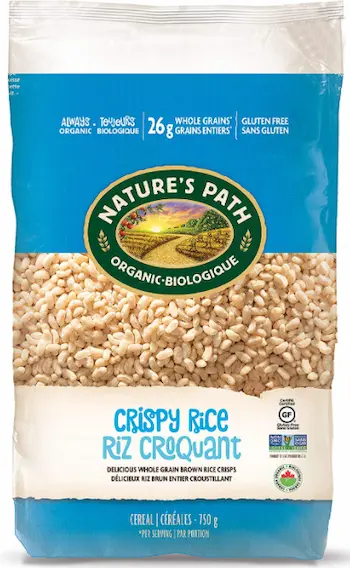
When I was growing up, Cream of Wheat cereal was my comfort food breakfast. Sometimes my Grandpa and I would get up early in the morning and he’d make it on the stove for me, even though he didn’t cook much else. When I went gluten-free, I was happy to hear that Cream of Rice existed and is a good substitute.
You can probably find gluten-free substitutes for your favorites too.
Rice Chex are gluten-free, but Rice Krispies are not as they contain malt which is made from barley. Nature’s Path makes a gluten-free Crispy Rice cereal that is exactly the same and makes great “Rice Crispy” squares.
Look for a gluten-free claim on the label to be sure your rice based cereal is safe.
Rice Cakes and Rice Crackers: An Excellent Gluten-Free Snack Option
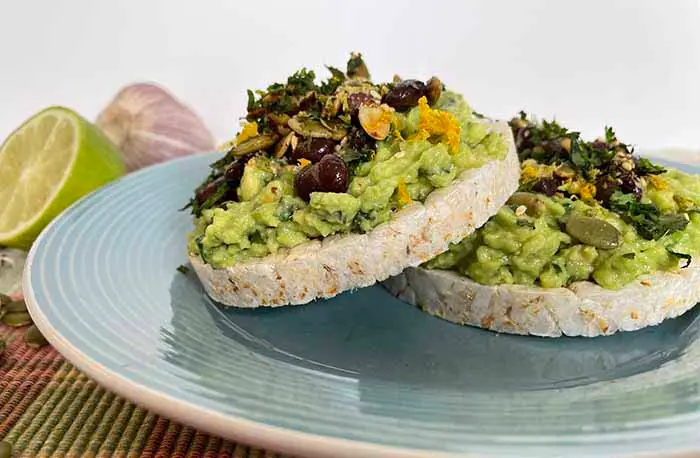
Plain rice cakes and plain rice crackers are naturally gluten-free and typically have a simple ingredient list, making them a good choice for gluten-free snacking.
Anything you can put on bread or toast can go on a rice cake and I have lots of suggestions here.
Plain rice crackers seasoned with sea salt are perfect with peanut butter, cheese, kobassa or anything else you would put on a cracker. Yes, you’ve had to give up your Triscuits (or maybe it’s me I’m talking about again) but these make a good sub.
Watch for flavored versions, they may have gluten containing additives so as always, check the label.
Rice Noodles, Pasta and More
If you love Asian food, you may have hit the jackpot. Many varieties of Asian noodles are made with rice and are naturally gluten-free. Think of the wide rice noodles in your Pad Thai, or the thin vermicelli rice noodles you often find in soups or stir fries. These are all gluten-free. Check the label to be sure or if ordering in a restaurant confirm with your server.
Rice paper, used for making spring rolls, is another fantastic gluten-free rice product. These thin, translucent sheets become pliable when soaked in warm water and can be filled with vegetables, proteins, and herbs to create fresh, healthy meals. I keep rice paper in my pantry because it's so versatile – you can make everything from traditional Vietnamese spring rolls to creative wraps and even baked "chips."
Rice flour is a common ingredient in my gluten-free cooking and baking and it often features in commercial gluten-free flour blends. Both white rice flour and brown rice flour are naturally gluten-free and can be used to make everything from bread to cookies to tempura batter. Even though plain rice does not need to have a gluten-free label, rice flour does. This is because rice flour can sometimes be processed in facilities that also handle wheat flour. I always look for brands that are specifically labeled gluten-free or certified gluten-free.
Rice milk is another rice-based product that's naturally gluten-free and can be a good alternative for people who also avoid dairy. Most commercial rice milk is safe, but some flavored varieties might contain additives that include gluten. Always check the label.
Do You Need a Rice Cooker?
I don't personally own a rice cooker, but all my Asian friends have them. A rice cooker can make preparing gluten-free rice easier, safer, and more consistent.
✅ Pros:
- Consistently cooks perfect rice without burning or boiling over
- Hands-free and easy to use
- Keep-warm function for flexible mealtimes
- Great for dedicated gluten-free use (avoids cross-contact)
- Can cook other gluten-free grains like quinoa or millet
⚠️ Cons:
- Takes up counter or storage space
- Basic models may not handle specialty rice well
Tips for Finding and Buying Rice Products
When I’m shopping for rice and rice products, I have a system that helps me make safe choices fast. Maybe this can help you too.
First, I choose plain rice rather than mixes or seasoned products, then add my own seasoning. Don’t forget to buy gluten-free soy sauce.
Next, I look for simple products with small ingredient lists and a minimum of flavorings like plain rice noodles, rice cakes or rice crackers. I add my own gluten-free toppings, flavorings and sauces.
When buying rice products online, I always read customer reviews and check the ingredient information. When the product arrives, check the ingredient list on the package. Websites are not always kept up to date, but labels must be accurate.
Shop the Guide
For your convenience, I’ve sourced some items for you. If you decide to purchase from these links, I may make a small commission at no extra cost to you.
Cooking Tips for Perfect Rice

Cooking rice properly can make such a difference in your meals. Culinary school and years of experience have taught me a few tricks that help me get perfect results every time.
Rinsing Rice
- I always rinse my rice before cooking to remove excess starch and any potential debris. This makes for nice fluffy rice that doesn’t stick together.
- Rinsing your rice also removes some of the arsenic and saponins which may be present in rice.
- You don’t need to rinse Minute Rice or other instant rice products as they are pre-washed.
Other Tips
- For basic rice cooking, use a 2:1 ratio of water to rice for long-grain varieties
- Bring the water to a boil before adding the rice. Once you add the rice, reduce the heat to low, cover the pot, and let it simmer without lifting the lid.
- Check the directions on the package for liquid ratio and cooking times.
I've also found that letting the rice rest for 5-10 minutes after cooking, with the lid still on, helps create perfectly fluffy grains.
Conclusion
Rice is one of the foundations of my gluten-free cooking, and I hope this guide has helped you feel more confident about incorporating it into your diet.
From simple steamed rice as a side dish to elaborate rice-based main courses, the possibilities are endless.
I encourage you to experiment with different rice varieties and rice-based products – you might discover new favorites that make your gluten-free journey more enjoyable.
Just remember:
- always read labels
- choose simple products
- look for gluten free certification on rice flour
Rice is one of the safest and most versatile foods available to us, and with the right knowledge, you can enjoy it with complete confidence. Whether you're making a comforting rice pudding, a vibrant stir-fry, or trying your hand at homemade sushi, rice can help you create delicious, safe meals that everyone will love.
